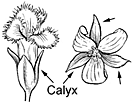Māmaki
Pipturus albidus
Nettle family (Urticaceae)
Native species ()
This variable species (in the broad sense including closely related species) is characterized by leaves with wavy edges, three main veins from base, and under surface light gray or brown and finely hairy. The fibrous bark was an important source of tapa or paper cloth.

©2010 Forest And Kim Starr
Leaves varying greatly in shape, size, and hairiness, with slender finely hairy leaf-stalks of 1–3 inches (2.5–7.5 ). Blades are or elliptical, 2 1⁄2–8 inches (6–20 ) long and 1 1⁄4–6 inches (3–15 ) wide, thin or slightly thickened, long-pointed at blunt or rounded at base, with wavy edges, with 3 main veins from base slightly sunken and often reddish, upper surface green and slightly rough, under surface mostly light gray and finely hairy. Microscopic mineral growths (cystoliths) like crystals are present. Flower clusters (heads) stalkless at leaf bases, rounded, 1⁄4–1⁄2 inch (6–13 ) in diameter, gray hairy.
Flowers male and female mostly in different clusters on the same plant (), many, stalkless, without Male flowers less than 1⁄8 inch (3 ) long, composed of cup-shaped 4- finely hairy and four Female flowers with urn-shaped four- finely hairy and hairy with and long
a dry whitish ball about 1⁄2 inch (13 ) across. Individual are many, rounded, with enlarged dry enclosing one seed () 1⁄16 inch (1. 5 ) long, elliptical and flattened, shiny.
Wood is dull reddish brown with pale whitish sapwood. Soft and fine-textured, it is easily worked.
The early Haweaiians prepared their tapa, kapa, or paper cloth from the bark of this native tree and from the introduced wauke or paper mulberry (Broussonetia papyrifera (L.) Vent.). This cloth served for clothing and bed covering. Rope and cord were made from the long strong fibers. The were used in home remedies. The young leaves made a good tea that was used as a tonic.
This species of mamaki in the broad sense is distributed through the islands in moderately wet to wet forests at 200–6000 ft (61–1829 ) altitude. The three other Hawaiian species currently accepted are Pipturus forbesii Krajina of east Maui, P. kauaiensis Heller of Kauai, and P. ruber Heller of Kauai.
Special areas
Wahiawa, Haleakala, Volcanoes, Kipuka Puaulu
Champion
Height 28 ft (8.5 ), c. b. h. 2.8 ft (0.9 ), spread 33 ft (10.1 ). Hawaii Volcanoes National Park, Hawaii (1968).
Range
Kauai, Oahu, Molokai, Lanai, Maui, and Hawaii
Other common name
waimea
Botanical
Pipturus brighamii Skottsb., P. gaudichaudianus Wedd., P. hawaiiensis Levl., P. hel-Skottsb., P. oahuensis Skottsb., P. pachyphyllus Skottsb., P. pterocarpus Skottsb., P. rockii Skottsb., P. skottsbergii Krajina.
Mamaki is the favorite food plant of the green caterpillar that becomes the beautiful reddish brown Kamehameha butterfly, according to Degener.
Another Hawaiian plant, ‘ākōlea, Boehmeria grandis (Hook. & Arn.) Heller, is also reported in old accounts as mamake or mamaki. It is a shrub with reddish leaves arranged like Pipturus but smooth, and not hairy, and that are long and dangling. Both species were used by the Hawaiians for similar purposes.









